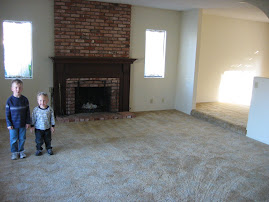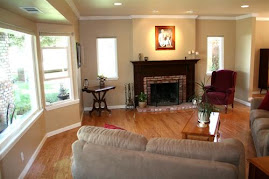In the interest of saving energy and helping the environment, I decided to post this article even though it isn't technically home decorating. Mrs T.
Wind energy is a plentiful, renewable and clean source of power that can be used in a large range of applications from wind farms through to home wind power. In residential applications a wind turbine, which is installed on top of a tall tower, collects kinetic energy from the wind and converts it to electricity that is compatible with a home's electrical system.
As wind energy is governed by nature as wind speeds increase, turbine output increases and the amount of power purchased from the utility is proportionately decreased. When the turbine produces more power than the house needs, the extra electricity is sold to the utility. All of this is done automatically. There are no batteries in a modern residential wind system.
Small wind generation systems with capacities of 100 kW or less are usually used to power farms, homes, and small businesses. Remote communities that would otherwise rely on diesel generators may use wind turbines to replace diesel fuel consumption. Home owners purchase residential wind generators to reduce or eliminate their electricity bills, or simply to generate their own clean power.
Wind turbines have been used for household electricity generation in conjunction with battery storage over many decades in remote areas as a reliable source or residential wind power. Increasingly, U.S. consumers are choosing to purchase grid-connected turbines in the 1 to 10 kilowatt range to power their whole homes. Residential wind turbines of more than 1 kW are now functioning in several countries, and in every state in the U.S.
In the United States, wind power receives a tax credit for each kilowatt-hour produced; at 1.9 cents per kilowatt-hour in 2006, the credit has a yearly inflationary adjustment. Another tax benefit is accelerated depreciation. Many American states also provide incentives, such as exemption from property tax, mandated purchases, and additional markets for "green credits." Countries such as Canada and Germany also provide incentives for wind turbine construction, such as tax credits or minimum purchase prices for wind generation, with assured grid access (sometimes referred to as feed-in tariffs). These feed-in tariffs are typically set well above average electricity prices.
If you want more information on home wind power please visit our site http://www.residential-wind-power.com
Article Source: http://EzineArticles.com/?expert=Barry_Lee
Monday, June 16, 2008
Subscribe to:
Post Comments (Atom)








No comments:
Post a Comment